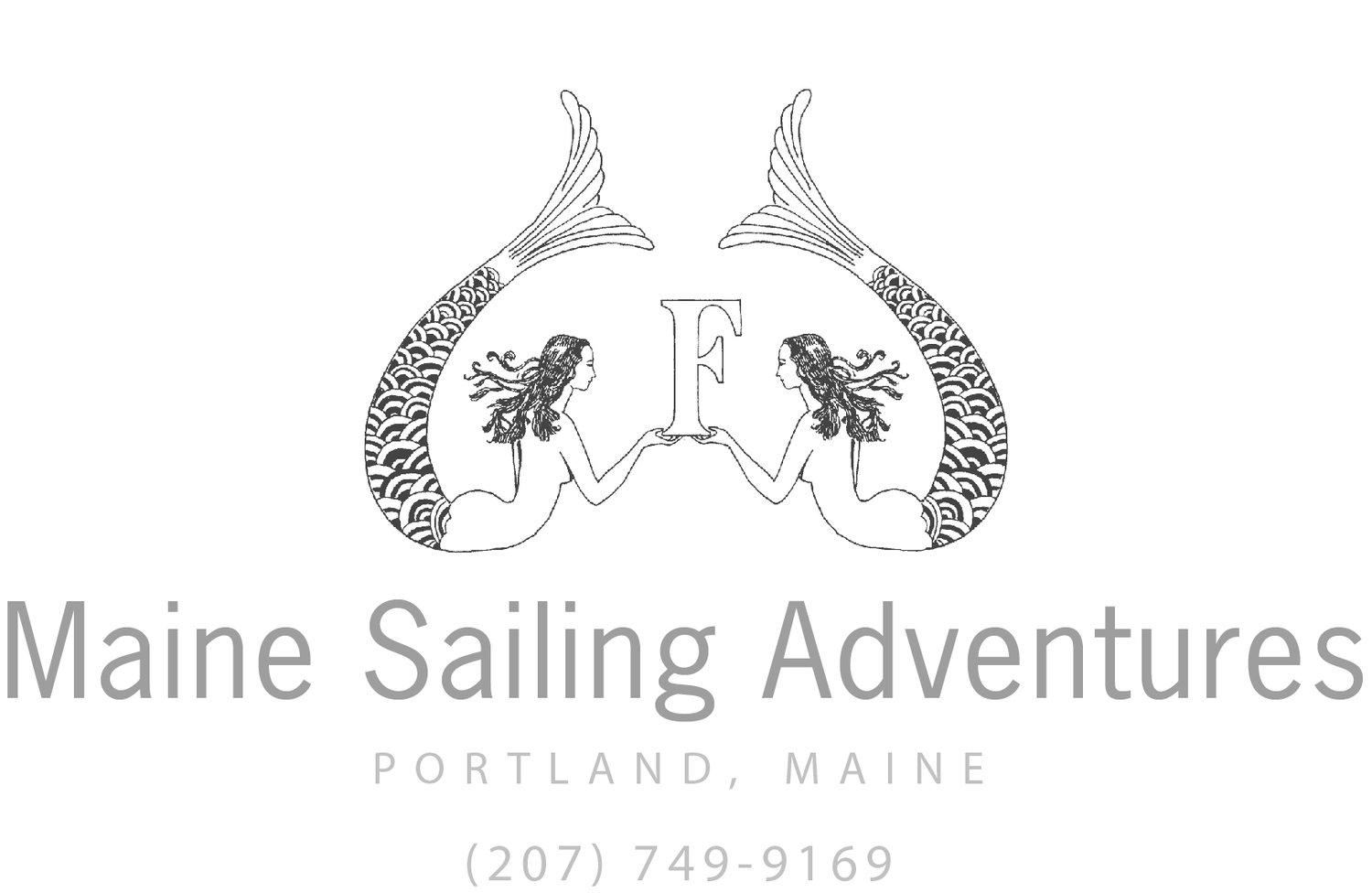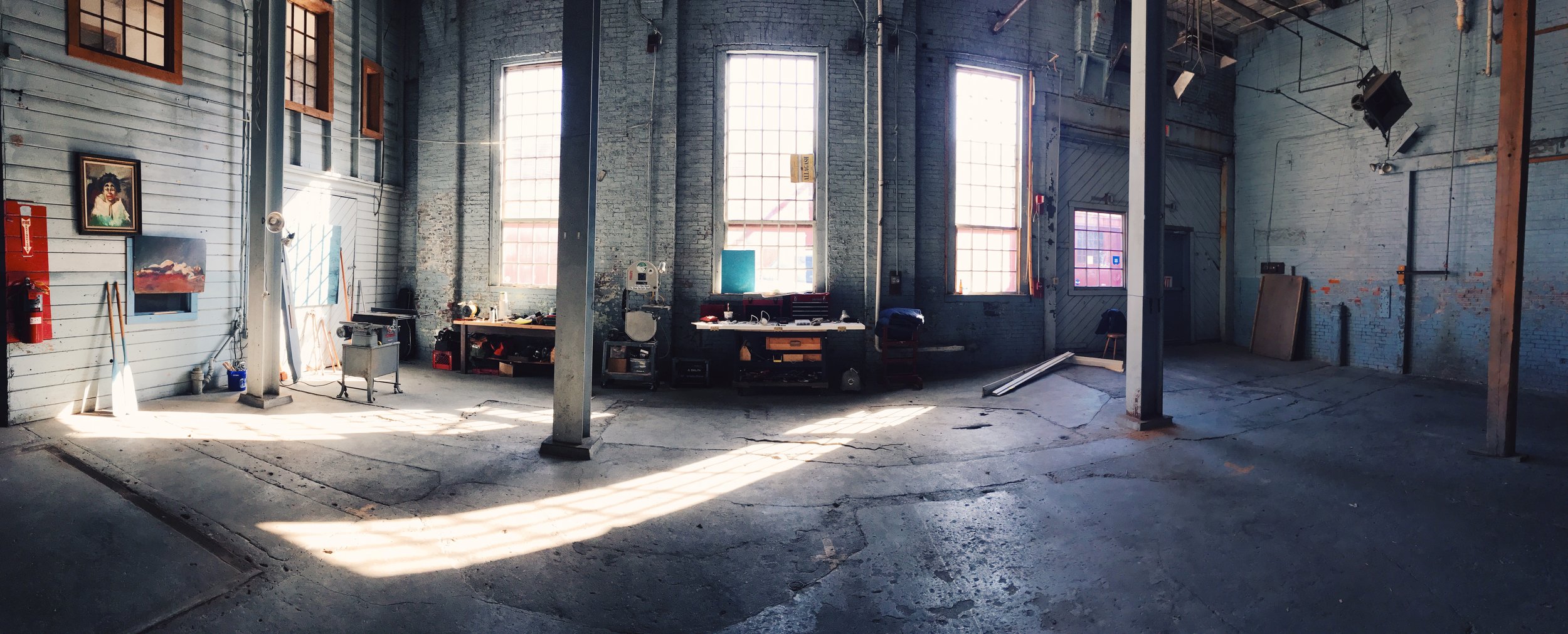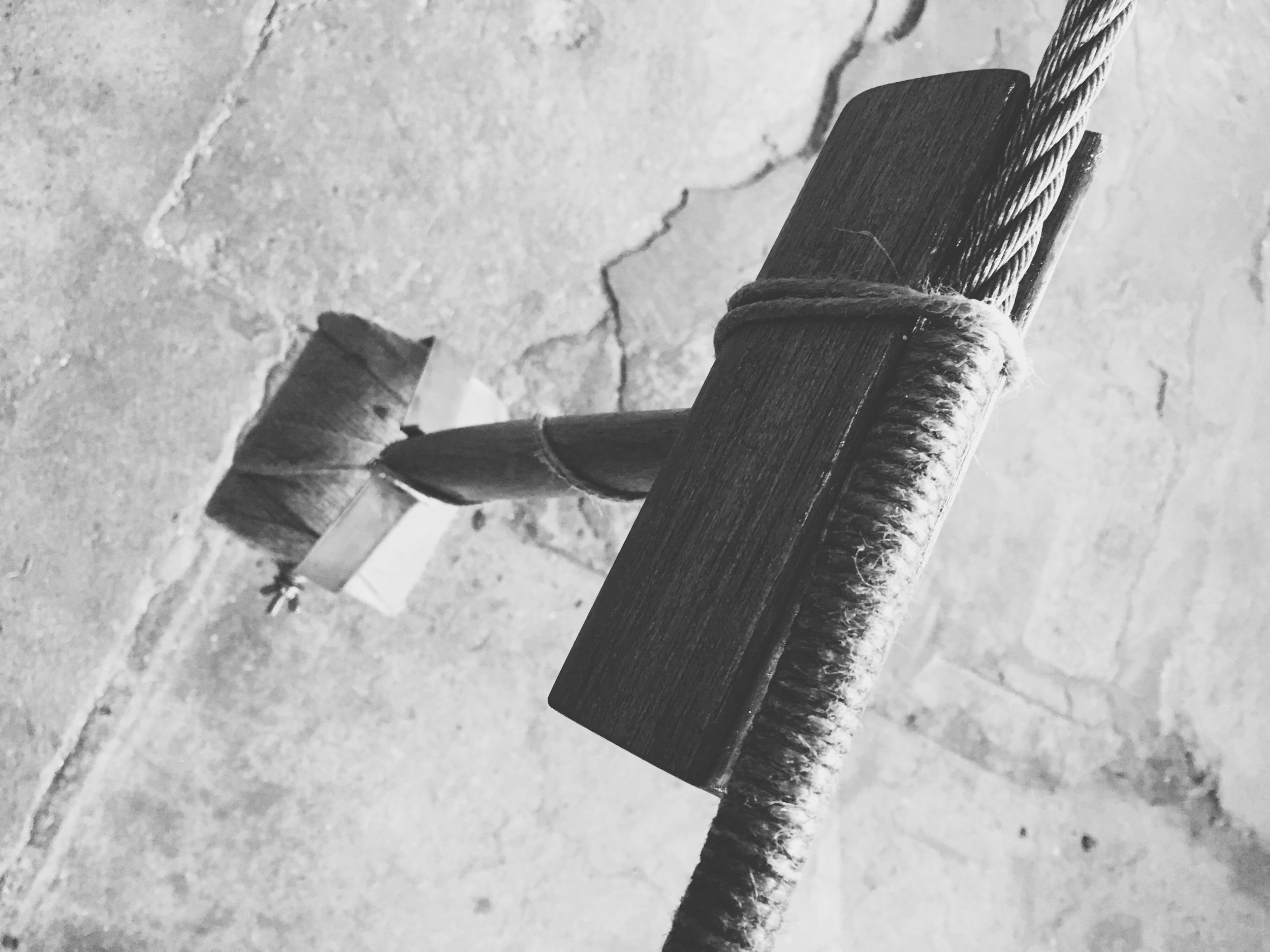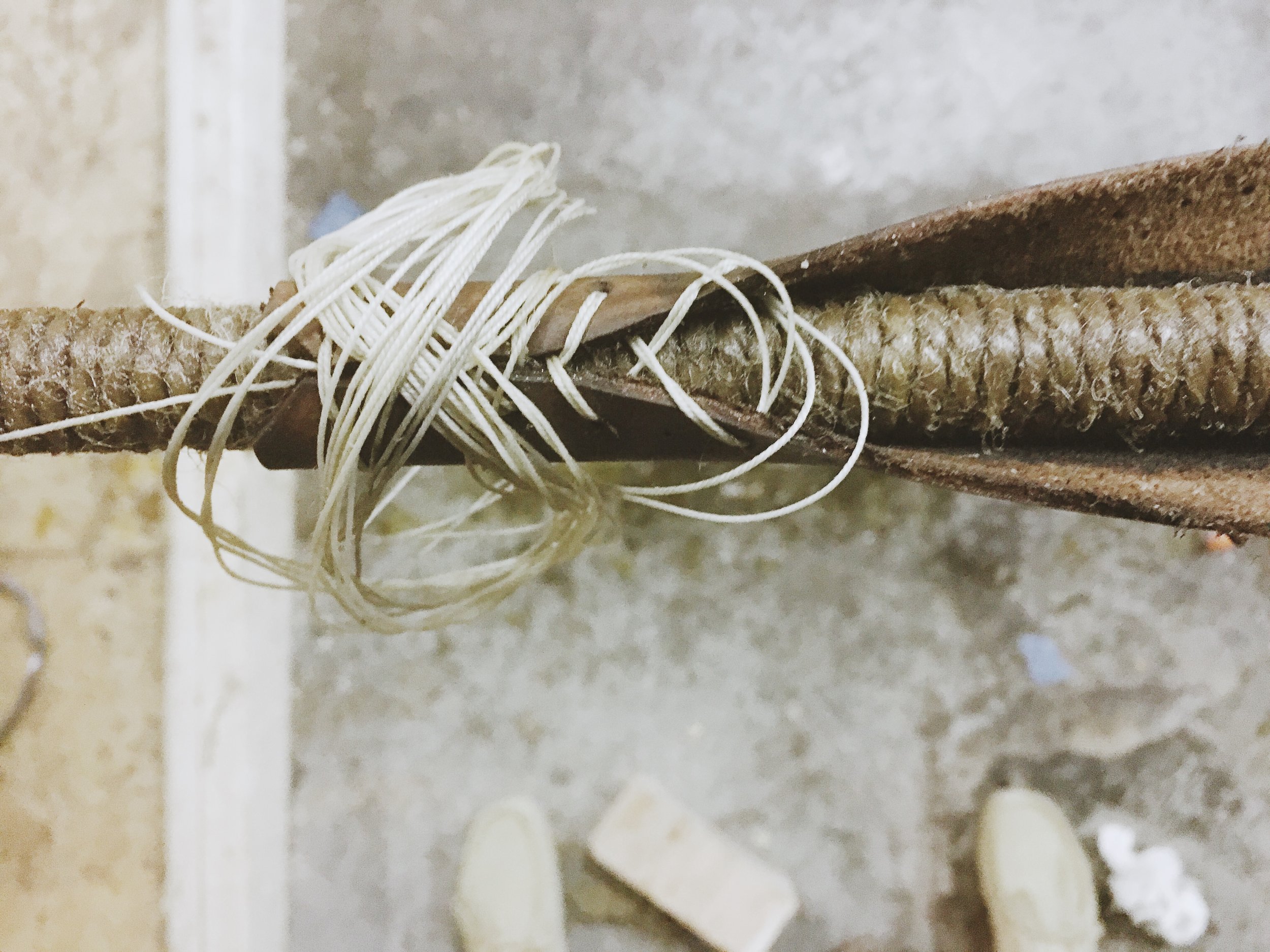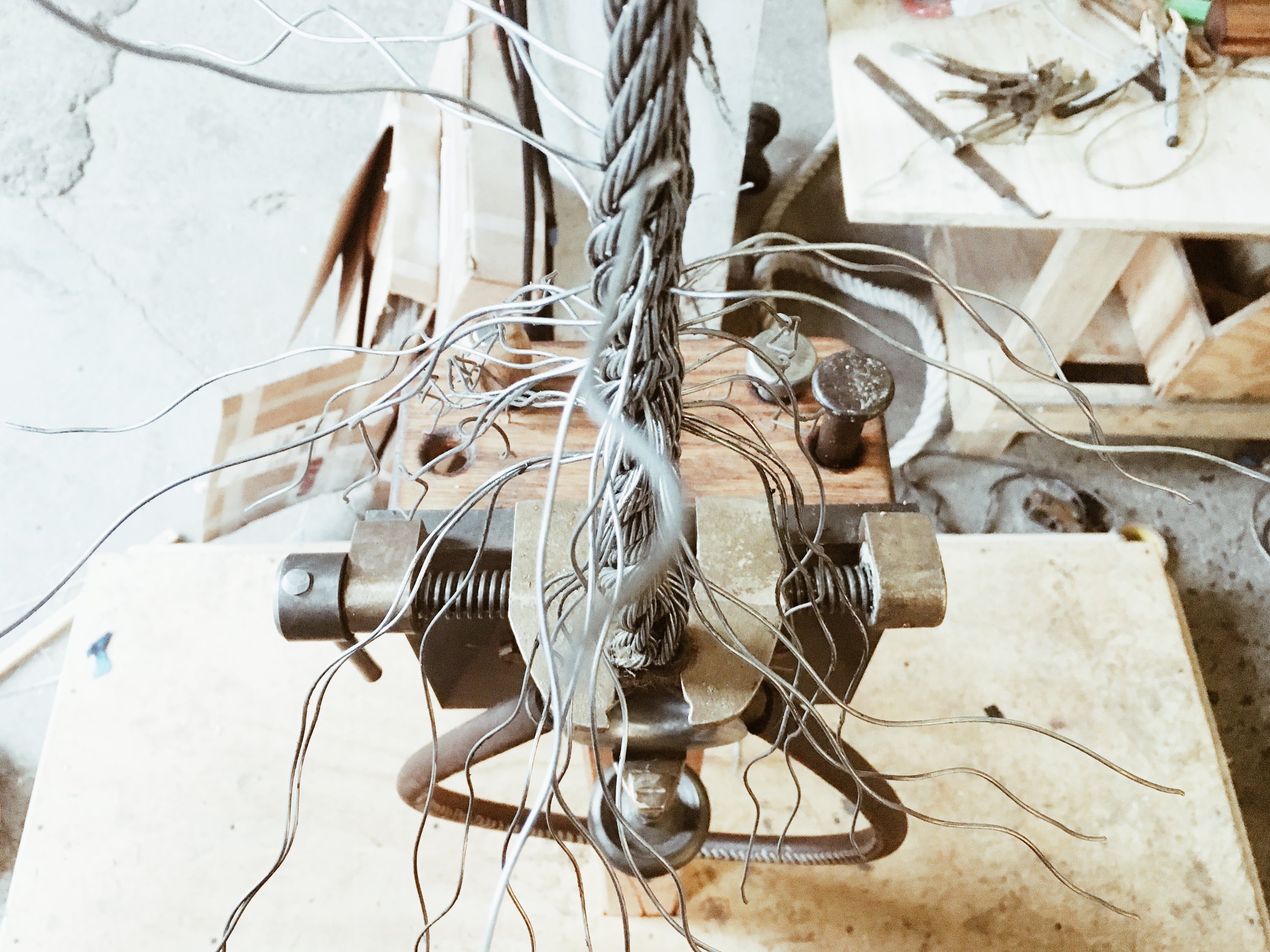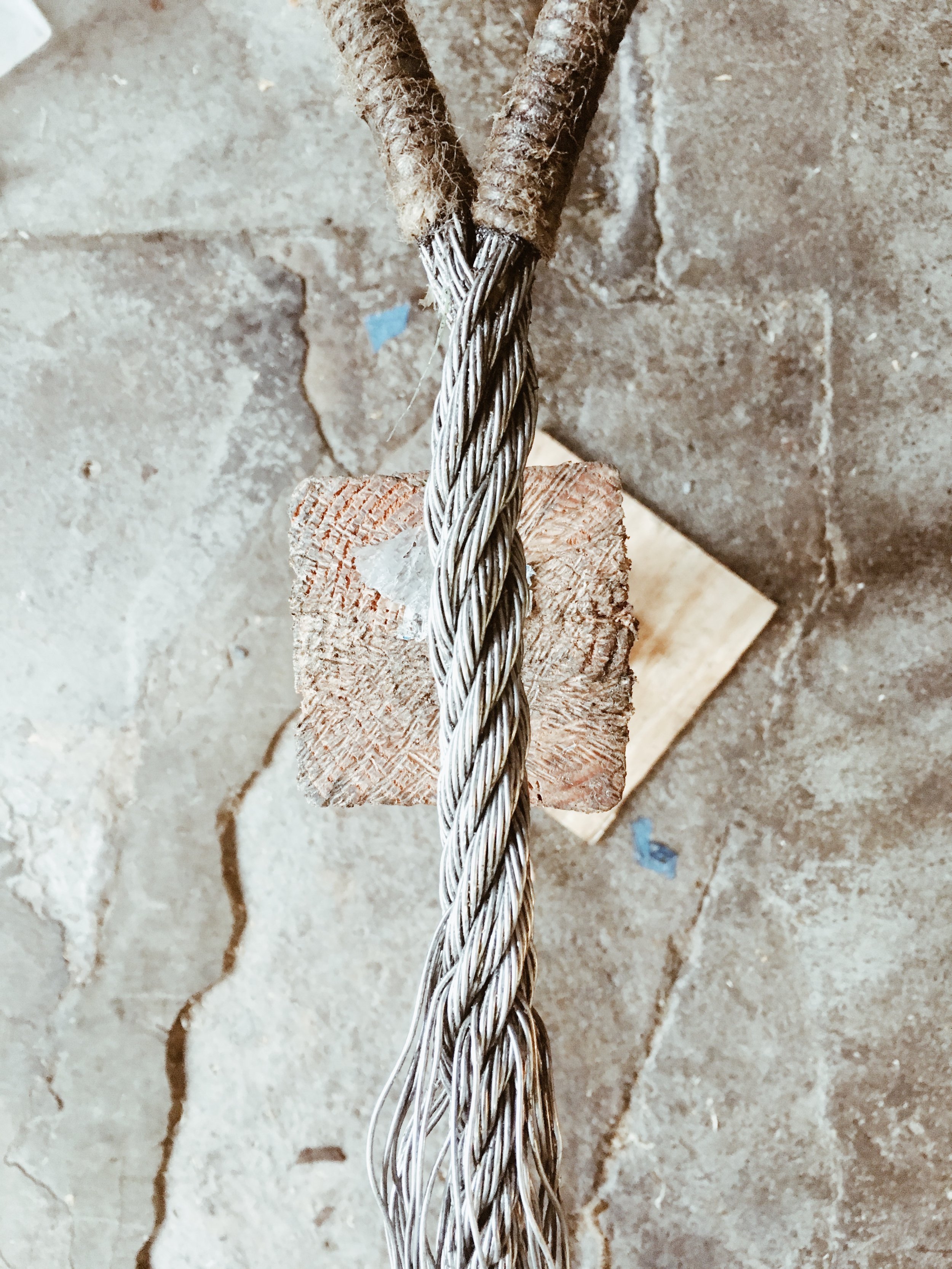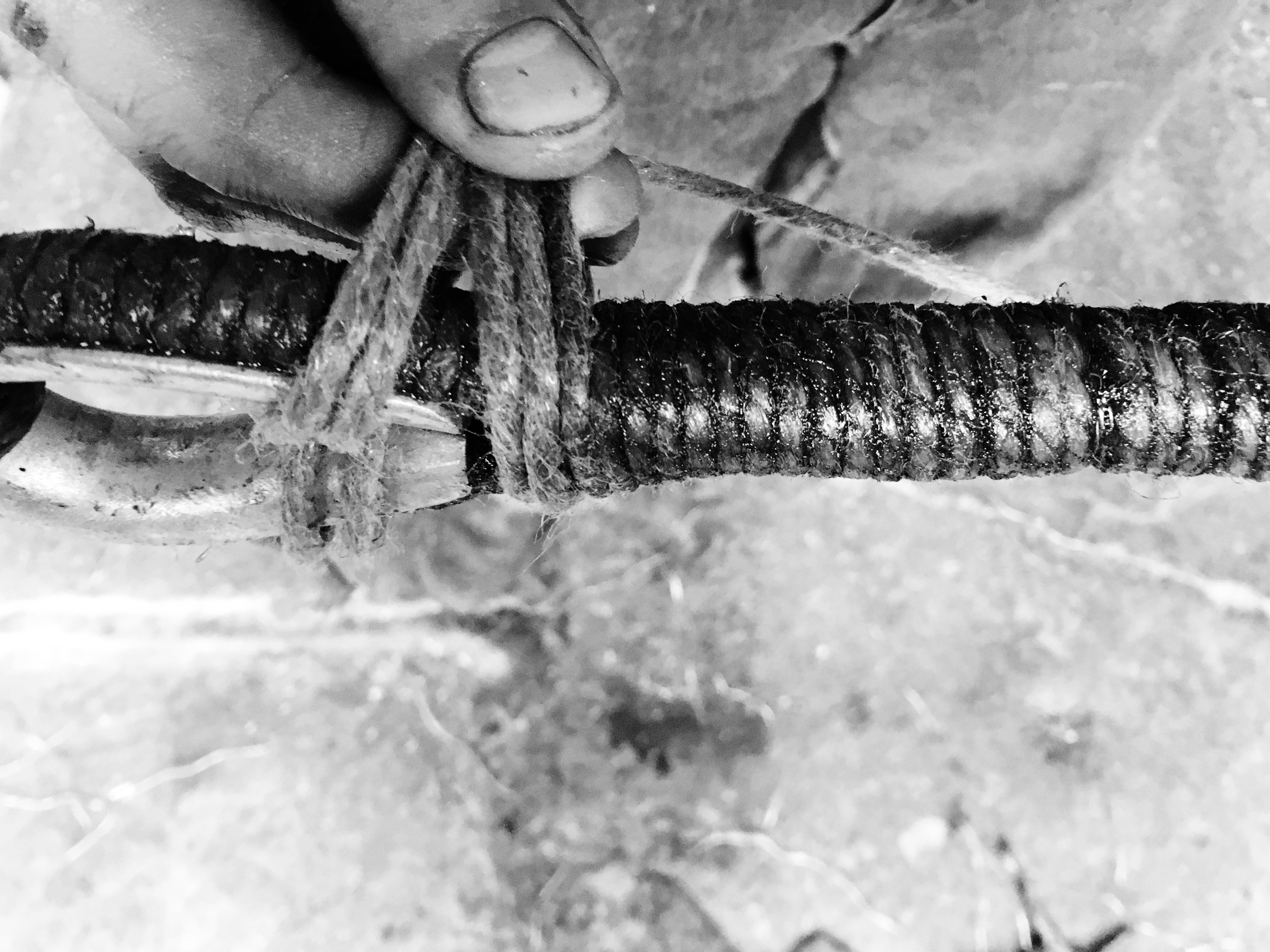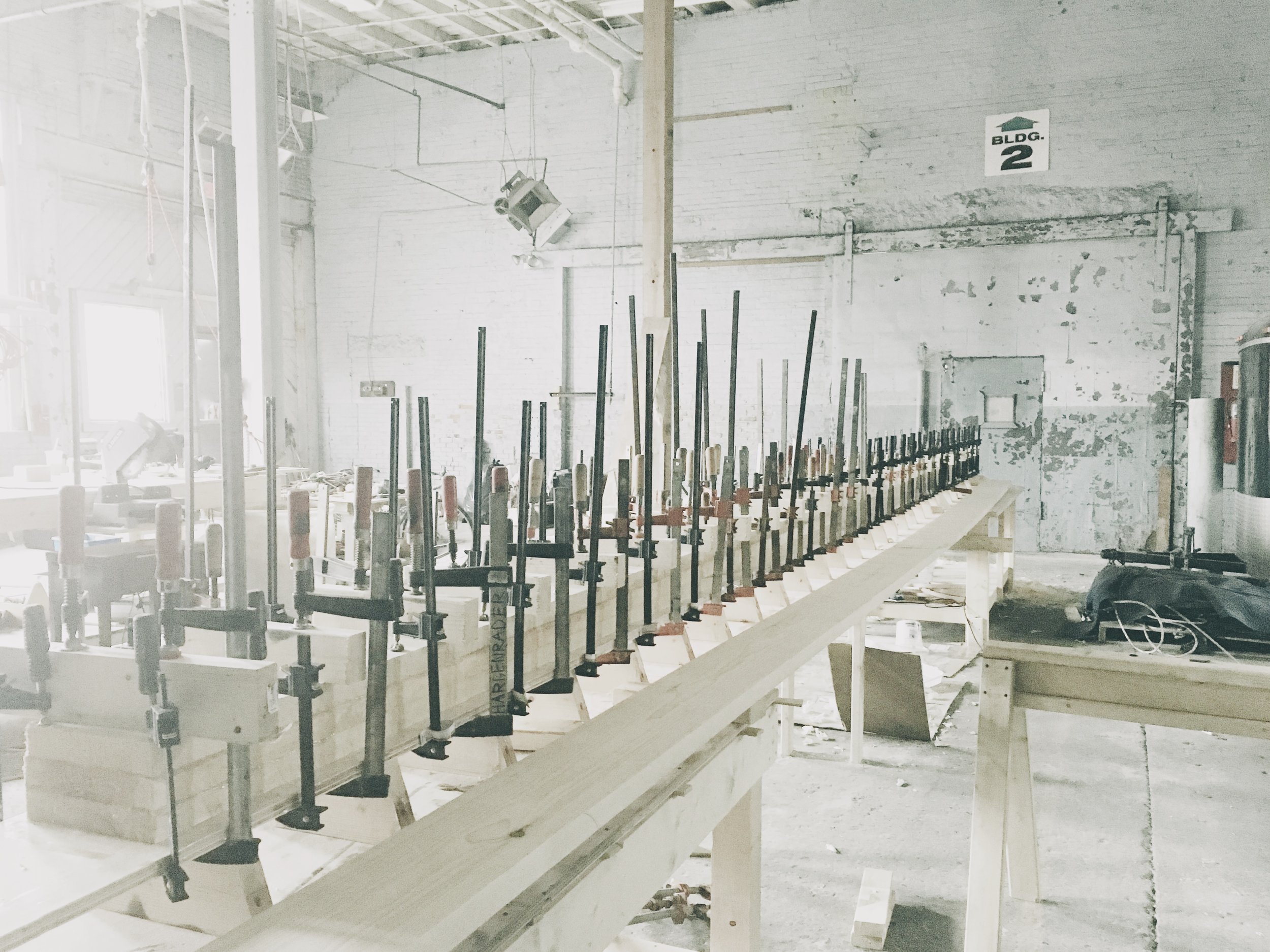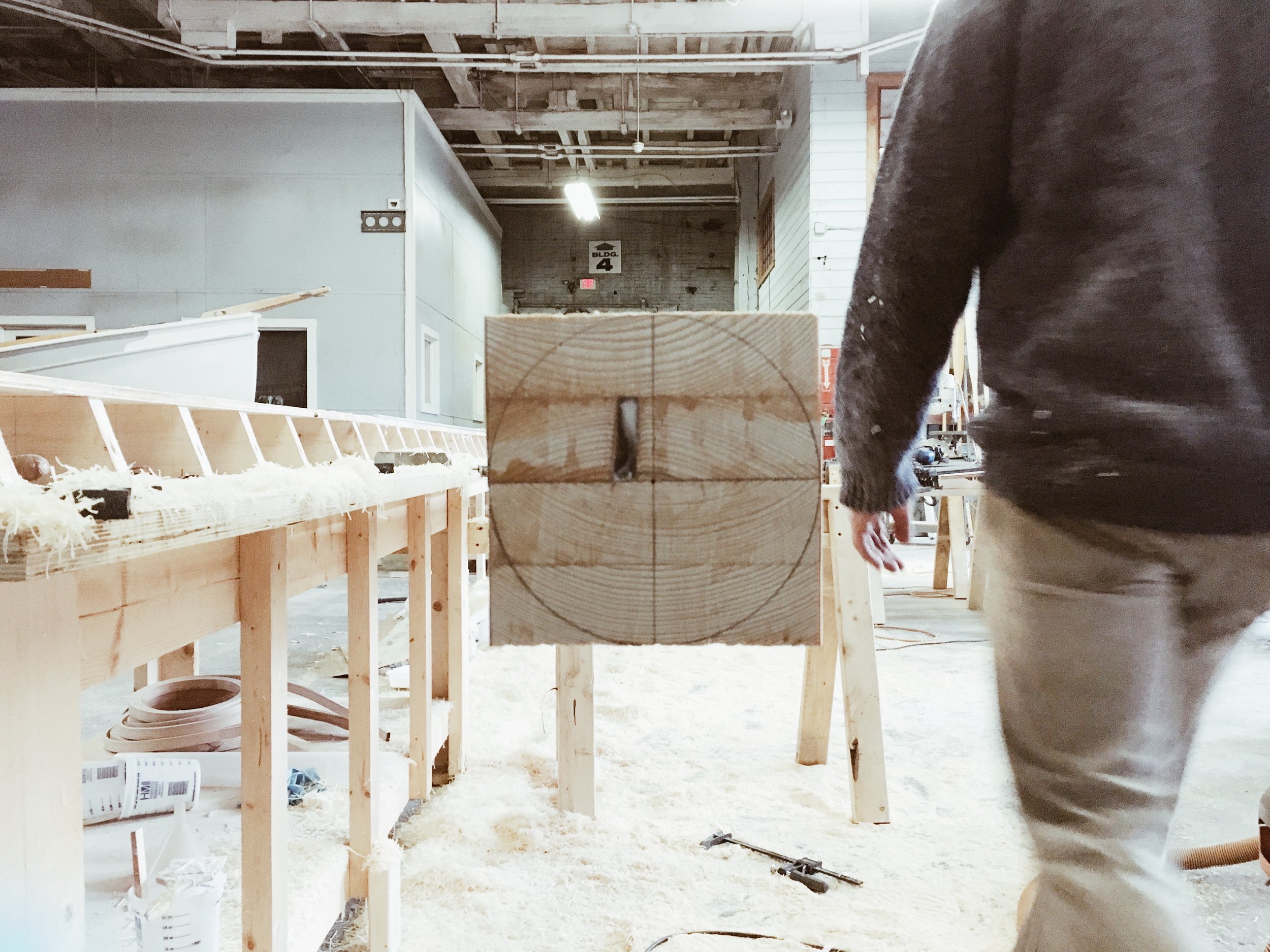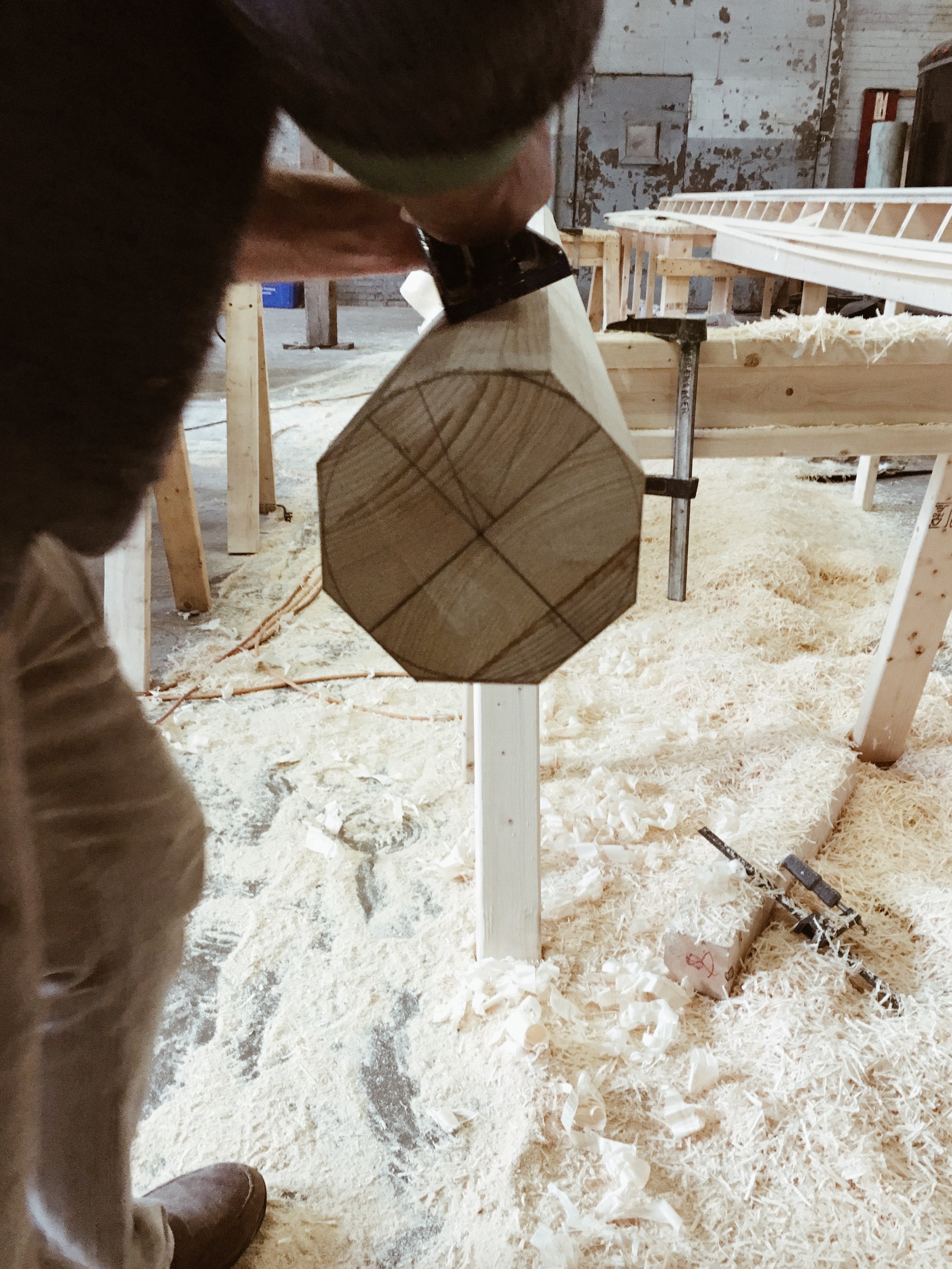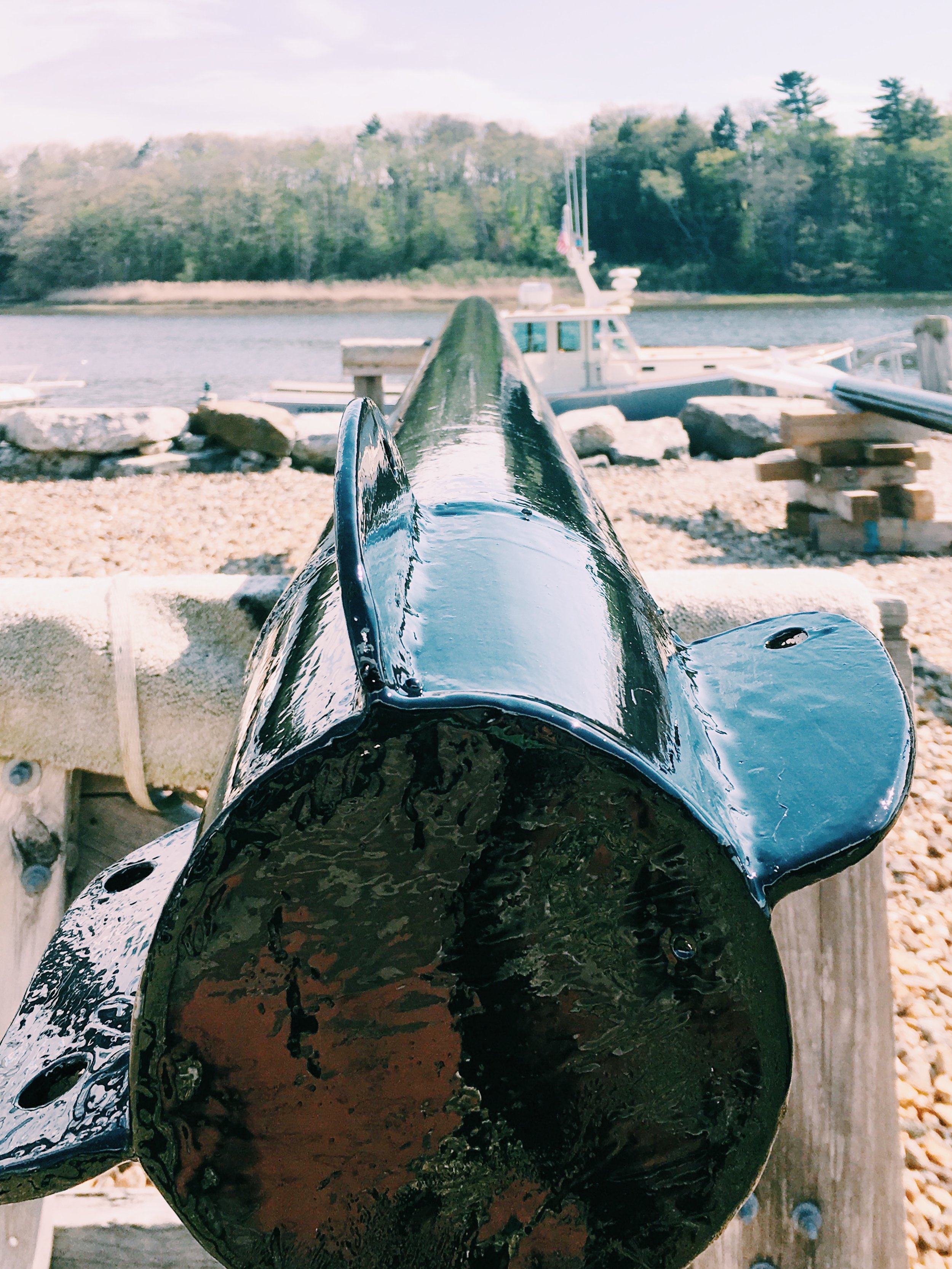I would have never guessed that I would have the good fortune to work in this space again. The morning light through the old glass windowpanes, all these years and it still stops me in my tracks. You would know it if you've been here. A silent giant on our waterfront.
Inside the pale blue brick walls of the Portland Company I was once again no longer a visitor. Before this beautiful building falls to the earth where it once rose, our crew was granted a short lease to build out a rigging shop and a wood working shop in the winter of 2017. It is in this very space, just a couple doors down, that the hull of Frances was constructed.
On a bright February morning we moved in and started to unpack. Bandsaw, tablesaw, paints and epoxies. We built a pedestal for our rigging vice, a sturdy working platform for splicing wire. We had a couple workbenches, we built more. It is here that we completed all of the wire splicing, service, and leathering of the upper portion of the standing rigging. In these winter months a new topmast and bowsprit were also built.
To properly build wire rope standing rigging, first one has to have a good handle on overall length, namely the length that is assumed by putting an eye in the wire and by tapering in a splice. Then one needs new wire stock, in our case spools and spools of 7X7 wire rope varying from 1/2 inch for lower rigging to 1/4 inch for rigging set aloft. All galvanized wire for shrouds, and all stainless wire for stays running forward. The head-rig was outfitted with all galvanized wire. Hundreds and hundreds and hundreds of feet of wire rope were ordered.
Next we had to devise a process for the worming, parceling, and service of our new rigging. Worming proved to not be necessary for the size wire we were using, the parceling was good enough to fill in the voids formed by the lay of the wire strands. A wrapping of friction tape (parcel), an oiling with linseed oil, and a wrapping of tight service was first applied in a short run before the wire was wrapped around the thimble. Similarly in the case of the large eye splices that set around the mainmast and hounds, parceling, service, and leathering were all completed before the splicing began. After the splicing came the pounding to flatten the long taper, followed by the stainless steel wire service. Over the wire service was the parcel and the tarred service.
This entire process was completed a second time for the lower parts of the rigging after the mast had been stepped. By this time it was spring, and there was a bit more urgency as there could be very little error in splice length or the mast would need to come down. The goal was to have symmetrical rigging with symmetrical turnbuckles set with generous room for adjustment as the wire would and will stretch over time.
Completed in May of 2017, there was little to no error in what was built. A new solid laminated spruce topmast, beautifully tapered, as well as a new solid laminated spruce bowsprit were added to Frances, and shipped in place before the final splicing came to be. The arrangement of this work in its completion was truly one of the proudest moments this vessel has ever seen.
Thank you Jeffrey, Rory, Sarah, Frances and Colby. Always.
It's a photo reel, enjoy.
